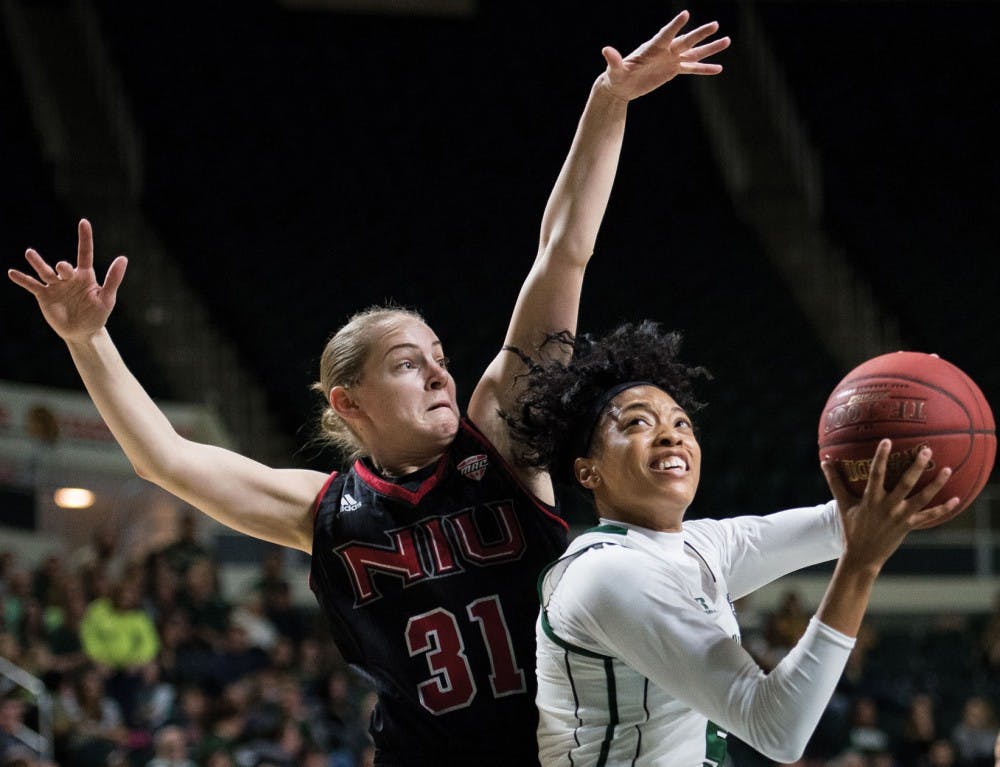Despite losing Kiyanna Black, the Bobcats have the tools to manufacture another dominating season in 2016-17.
Dumping high expectations on a team certainly doesn’t make playing any less stressful.
That was the reality Ohio struggled with all last season, a year removed from an NCAA Tournament appearance, with a returning roster that could produce the best result in program history.
Yes, there was pressure. At times, that led to visible stress.
Ohio, the team in the conference every program wanted to beat, struggled to cope with the extraordinary burden. Sometimes players bickered on the court. Other times the Bobcats appeared almost too tense, afraid of losing; afraid of not making the NCAA Tournament.
And they didn’t.
Thanks to Buffalo beating Ohio three times — Ohio’s only three loses in the Mid-American Conference in 2015-16 — the Bobcats were one of the last four teams left out of the NCAA Tournament.
Instead, they played in the Women’s National Invitation Tournament (WNIT), a consolation prize to not making the NCAA Tournament, where they beat Marshall and Virginia Tech to advance to the Sweet 16. Ohio had never won a postseason game before those victories.
But the mood will be different in 2016-17.
For starters, Kiyanna Black, the second-highest scorer in program history, graduated this spring. Black leaves the program as one of the few players to be a part of the best season in program history, 2014-15, and the worst, in 2012-13.
In addition, the inexperienced freshmen class that coach Bob Boldon relied on three years ago will now be seniors and will be the best core of returning players in the conference.
Quiera Lampkins, a senior who can rotate as guard and forward, is the returning MAC Defensive Player of the Year. Lamkpins averaged almost 15 points and five rebounds per game last season, as well producing a team-best 124 assists. Lampkins will likely fill the void Black has left.
On the low post, senior Jasmine Weatherspoon’s role as a shot blocker and rebounder will grow in significance with Lexie Baldwin graduating this past May. Weatherspoon’s 56 blocks last season led the conference.
Another returning starter is Yamonie Jenkins, who acts as more of a distributing point guard than a shot-taker. Jenkins had 99 assists last season while averaging seven points per game.
Jenkins, Weatherspoon and Lampkins are the team’s returning starters.
Players to watch
Dominique Doseck, a sophomore and Athens-native, could likely ease into the starting lineup for the Bobcats. Often times acting as the first player off the bench, Doseck averaged four points and was one of the better shooters on the team.
{{tncms-asset app="editorial" id="b73f7c62-f228-11e5-ba4d-33096d030458"}}
Taylor Agler, a transfer from Indiana, could also move into a starting role. Agler was ineligible last season, but could work into the lineup as another shooting option for Ohio’s motion offense.
The Bobcats were the worst rebounding team in the conference last season. Therefore, junior Kelly Karlis might become a key forward for Ohio down low. If Ohio continues to struggle rebounding, this time it won’t have Black to make a few 3-pointers to keep the Bobcats in the game.
@charliehatch_
gh181212@ohio.edu






